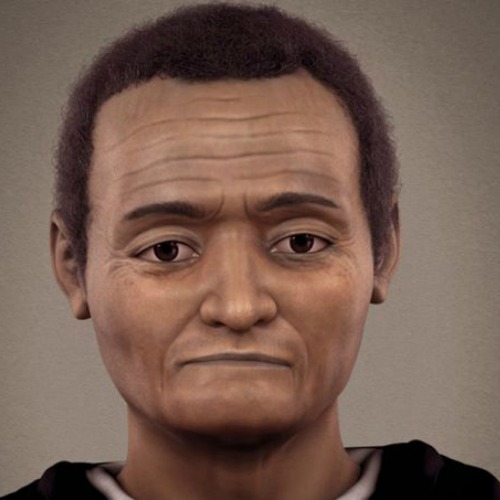New Tech Reveals St. Martin de Porres’ True Face
A team of researchers using 3-D technology reconstructed the black saint’s face and found it strikingly similar to the depiction of unknown Peruvian artists from his time.

LIMA, Peru — A new reconstruction of the face of St. Martin de Porres reveals the face of the Dominican brother as he was in life, as well as his physical suffering: The saint had trouble eating toward the end of his life, due to the fact that he was missing most of his teeth.
When St. Martin died, he had only two teeth left and would have had great difficulty chewing, said Dr. Paulo Miamoto, pointing to the distortions in the saint’s upper jaw.
Miamoto was part of an anthropology and dentistry group that spoke at a Nov. 3 presentation on the reconstructed face of the Peruvian saint.
The presentation coincided with the unveiling of the face, constructed by a team of specialists from research based on the saint’s skull.
Thousands of the faithful packed the Basilica of the Most Holy Rosary in Lima for the event.
A solemn Mass was celebrated by Auxiliary Bishop Raúl Antonio Chau of Lima and concelebrated by Dominican priests. In the homily, the bishop emphasized St. Martin’s humble service and recalled the words of St. John XXIII, who called him “Martin of Charity” at his canonization Mass.
Once the Eucharistic celebration was over, Father Luis Ramírez, prior of St. Dominic Convent, where Martin lived, introduced the specialists from the NGO Ebrafol, a Brazilian forensic anthropology and dentistry team that headed up the study.
The specialists gave details on how they were able to reconstruct, through digital 3-D imaging, the face of the famed black saint.
For his part, 3-D designer Cicero Moraes explained that when he made the graphic representation of the saint’s face, the result coincided closely with an old painting and a statue of the saint by unknown artists that are kept at the convent.
The research on the project was a collaborative effort between the NGO Ebrafol, St. Dominic’s and the universities of St. Martin de Porres and Inca Garcilaso de la Vega in Peru. The group has previously recreated and unveiled the faces of St. Rose of Lima and St. Juan Macías.
The son of a Spanish nobleman and a black slave woman, St. Martin de Porres was born in Lima in 1579. A talented medical apprentice, he sought to enter the Dominican Order, but was initially prevented from becoming a religious brother due to a Peruvian law at the time that prevented people considered of “mixed race” from joining religious orders.
Instead, he lived with the community and did manual work, earning the nickname “Saint of the Broom” for his diligence and care in cleaning the Dominicans’ quarters. Eventually, he was permitted to join the order, and he worked with the sick in the infirmary.
- Keywords:
- 3d technology
- lima
- peru
- st martin de porres

















